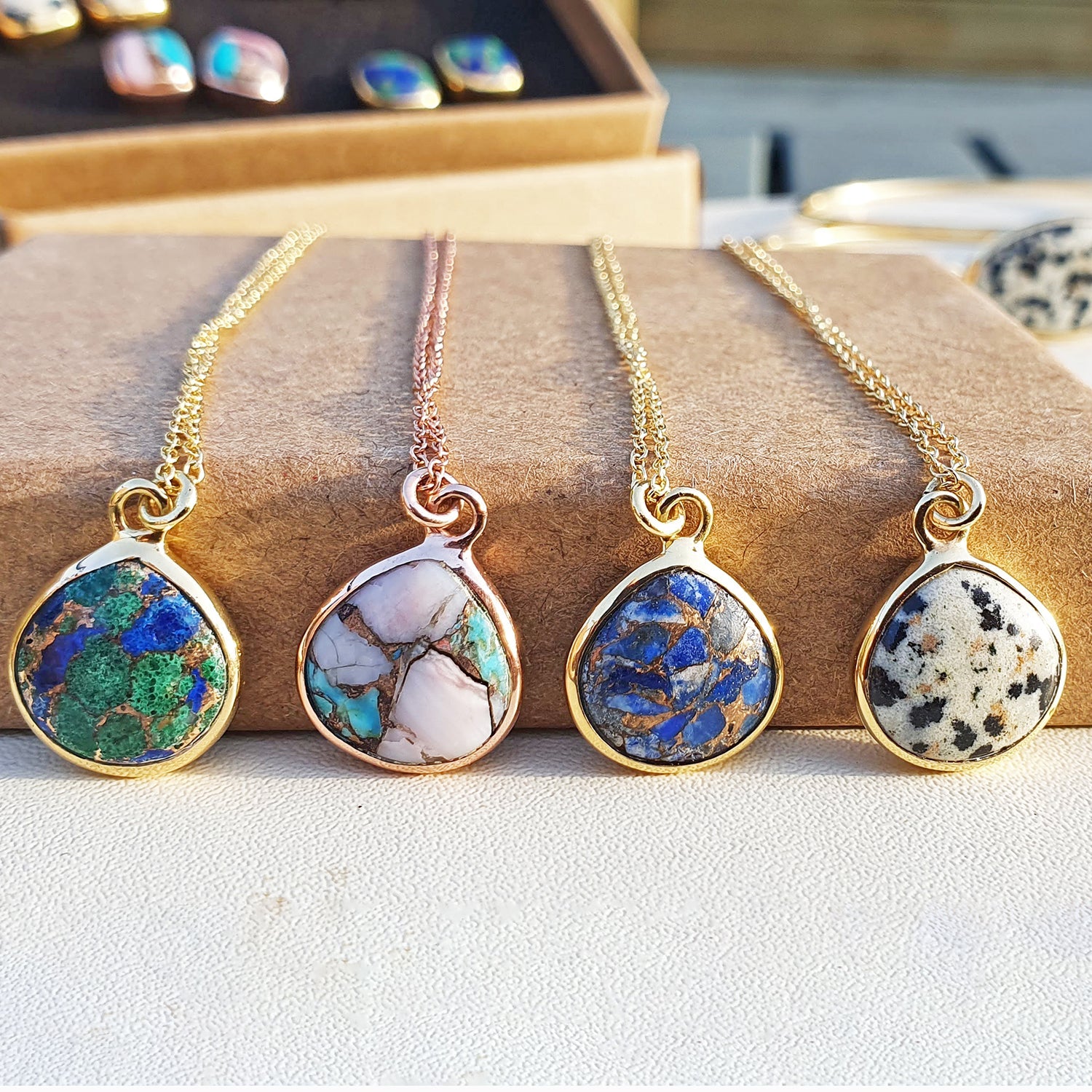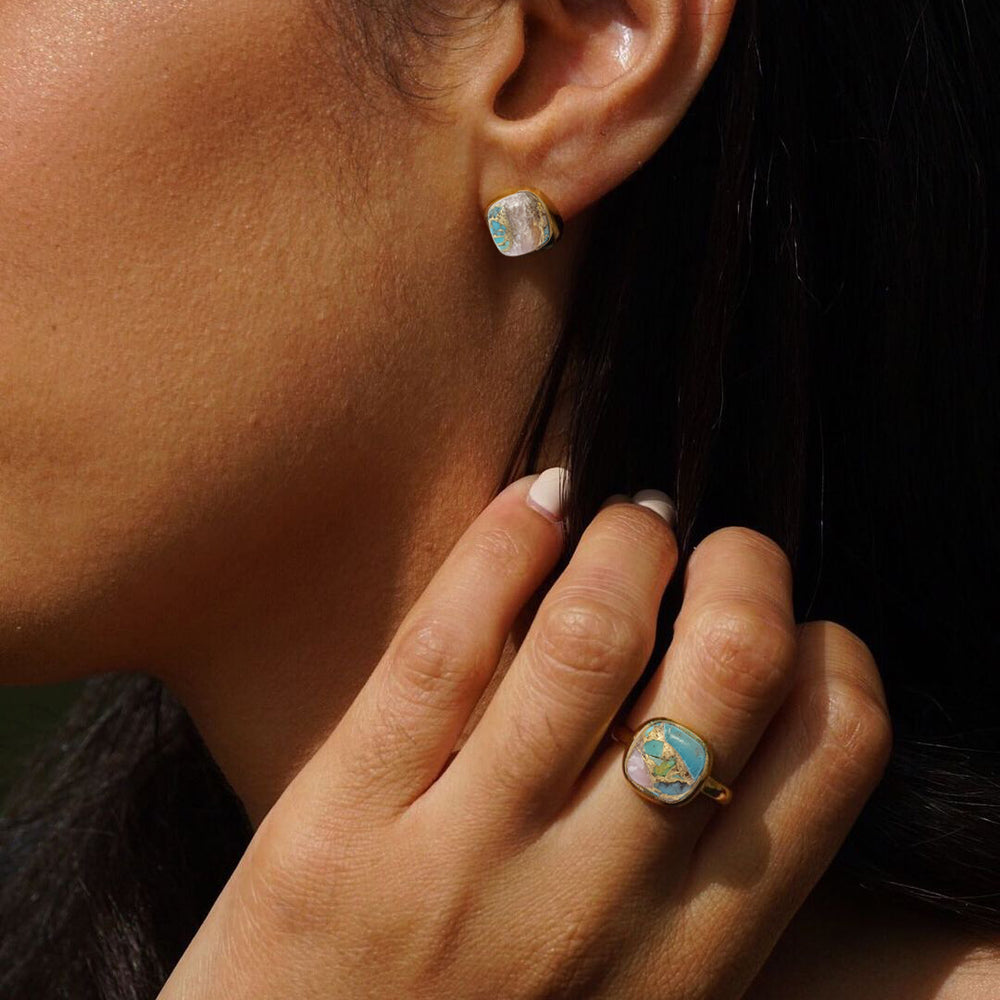Discover the Beauty and Meaning of Turquoise December Birthstone Jewellery
Turquoise - December Birthstone
The Meaning and History of Turquoise
turquois. The gem was initially introduced to Europe by Turkish merchants from mines that were found in modern-day Iran. The Romans knew it by a different name however, callais, but that name was abandoned in favour of the French in the 17th century.
As the stone is rare, it has been used as a symbol of status and wealth in ancient societies since at least 3000BC. The Ancient Egyptians were big fans of using it for their sarcophagi, with even Tutenkhamun having turquoise inlays on his ceremonial burial mask. The Ancient Persians and Indians used it too, mostly as an accessory for royal headwear and jewellery. All of these societies loved turquoise for its unique colour, and the Persians especially associated the blue of the turquoise with the blue of the sky.
Entirely separate from Eurasian empires, the Aztecs also made great use of turquoise stones for ceremonial jewellery, calling it chalchihuitl.
Opal & Copper Turquoise Bracelet & Ring
Where does Turquoise come from?
As one of the first gems to be mined by humans, many of the smaller sources have been picked clean over the years. There are many small deposits around the world that are hand mined, as the scarcity and locations of these deposits mean that year-round and mechanical mining just isn’t possible.
The much larger source of turquoise is as a by-product of industrial copper mining. These larger operations in Iran, the US, and Egypt find turquoise as vein or seam fillings for the copper. Larger turquoise nuggets are also sometimes found. The production in Egypt is centred around the Sinai peninsula, where turquoise has been mined on-and-off for about the last 5000 years. Sinai turquoise is the greener of the Asian varieties, and the most translucent of anywhere in the world. Iranian turquoise operations are usually restricted to the eastern Khorasan province, at the base of the mountains that line the border with Afghanistan.
The USA is the world’s largest producer of turquoise, with mines across the south-east of the country producing turquoise either as a main focus or a by-product. Nevada and Arizona are the hubs of production, with the unique blue that’s found there very appealing for jewellery designers.
Opal & Copper Turquoise Necklace
The Properties of Turquoise
Turquoise is not the hardest gem, ranking at close to 6 on Mohs scale. It almost never appears as a crystal, always as a mineral close to a larger copper deposit. This is because turquoise is actually formed from copper minerals underground. Hot waters circulating through the earth’s crust pass over copper sulfides and form turquoise.
Turquoise is also usually opaque, with some rare translucent gems which are highly prized. They’re also not particularly refractive, owing to the lack of any real crystals, being mostly absorbers of light rather than a reflector or refractor. The beauty comes from the colour more than anything.
Green Copper Turquoise Earrings
Turquoise - The December Birthstone
Opal & Copper Turquoise Earrings
Mystical Powers of Turquoise
Opal & Copper Turquoise Ring
Interesting facts about Turquoise
5. Marco Polo mentions a small source of turquoise in Sichuan, China
Opal & Copper Turquoise Rose Bracelet
Caring for your Turquoise jewellery
As turquoise isn’t the most durable gem, please do be careful when storing and moving your topaz jewellery. It can also start to lose it’s colour if left in the light too long, which the Persians thought was a very bad omen, so please don’t leave it in direct sunlight too often. The stones can take a good polishing, but if done by someone who doesn’t know what they’re doing it can lead to a white film building up on the stone. Please leave your topaz maintenance to an expert, and if you are an expert, go for it.
Opal & Copper Turquoise Rose Ring & Bracelet
Where to buy Turquoise
The unique colour of turquoise means there’s no other stone quite like it. It’s a unique accessory for any outfit, and you’ll end up planning your outfits around your jewellery, rather than the other way round.













Leave a comment